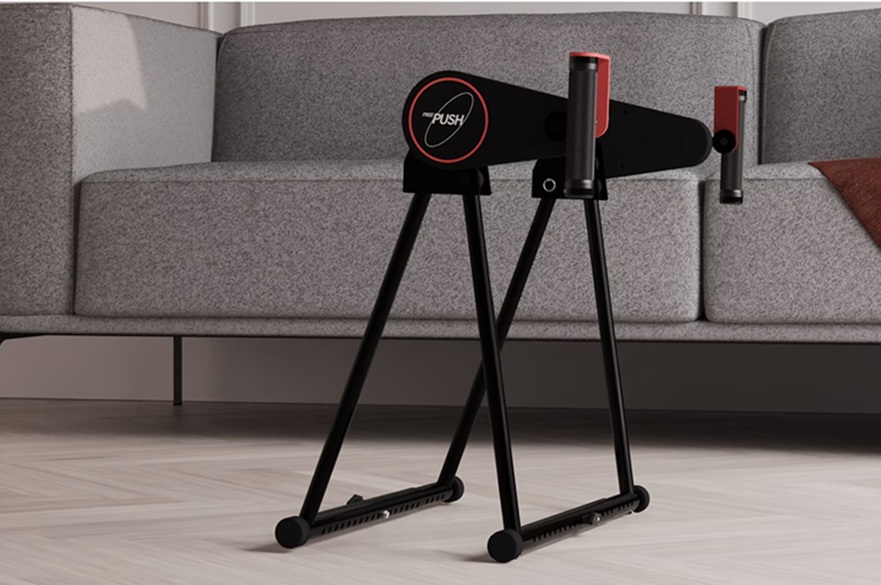NTU student designs affordable handcycle trainer to empower wheelchair users
Wheelchair users who want to develop the strength and confidence to use manual, rather than electric, wheelchairs can benefit from a low-cost at-home trainer thanks to a Nottingham Trent University (NTU) student.
By Jon Duckworth | Published on 9 June 2025

James Shaw, 29, who has cerebral palsy and has used a wheelchair all his life, wanted to empower others to leave their electric wheelchairs at home and become more independent by developing the strength and technique required for a manual one.
James - a six-time national wheelchair tennis champion who was part of the British team that won the World Team Cup in 2017 - wanted his design to empower all wheelchair users, not just those who are into sport.
“This isn’t for elite athletes – it’s for everyday users who want to get active again or stay mobile,” said James, who is studying BSc Product Design in the School of Architecture, Design and the Built Environment.
“Newly injured people get a lot of support early on, but many others fall through the cracks. This product can bridge that gap.”
James, of Ruddington, Notts, has created a working prototype handcycle trainer that replicates the pushing technique used in wheelchair sports – an elliptical, circular arm motion often overlooked in conventional wheelchair training.
Unlike existing, bulky wheelchair treadmills, his device is compact, folds down for easy home storage, weighs just six kilograms, and is expected to retail for around £400 – approximately half the cost of market alternatives.
The trainer connects to a wheelchair via a simple A-frame, which houses three interchangeable magnets that generate variable resistance. Three interlocking steel gears turn when the user pushes the handles, which simulates the arm movement required to propel a wheelchair.
“It’s designed for people who want to improve their technique, fitness and independence, without needing to be involved in sport,” said James, who is studying BSc Product Design.
“As a child I used an electric wheelchair, and although it helped me get around, it made me feel different and less independent. That’s what pushed me into sport. I wanted to get stronger and more confident pushing my manual chair.
“I realised many people, especially those not in sport or who’ve been using a wheelchair for years, don’t have access to equipment that helps them build pushing technique.
“If you can use a manual chair it will make you more independent. If you’re not independent at pushing the chair, it brings on other problems, such as relying on other people to push you and feeling stressed and anxious about going to places.
“Just building up the training of the ability to push the chair should release a lot of anxiety for people and increase their independence. Technique is key – not just strength. And if people can improve their push, they can become more independent, reduce reliance on others, and feel less anxious about going out.”

James Shaw - BSc (Hons) Product Design
The device has received positive feedback from wheelchair users and physiotherapy professionals, including strength and conditioning coaches, particularly for its ease of use and home storage capability. James’s working prototype is set to go on show for the 2025 NTU Student Showcase, which is one of the largest displays of graduating art and design talent in the country.
Dr Joseph Stewart, course leader for BSc Product Design at NTU, said: “James knows from personal experience the benefits that can come about from using manual, rather than electric wheelchairs, wherever possible for individuals.
“He has created a product which is practical, affordable and could benefit millions of people around the world by developing their mobility and personal confidence, and in doing so helping improve their lives.”